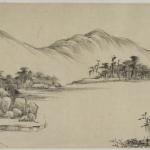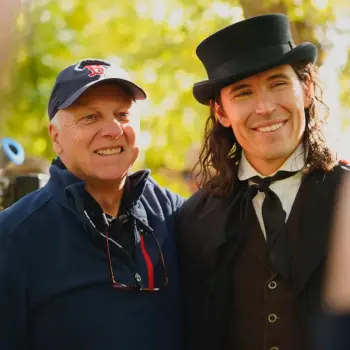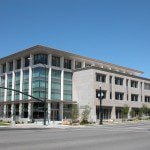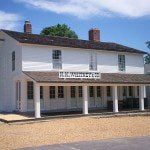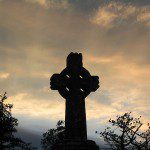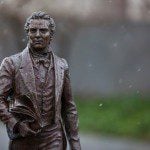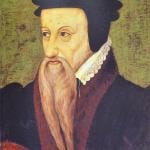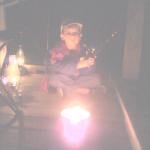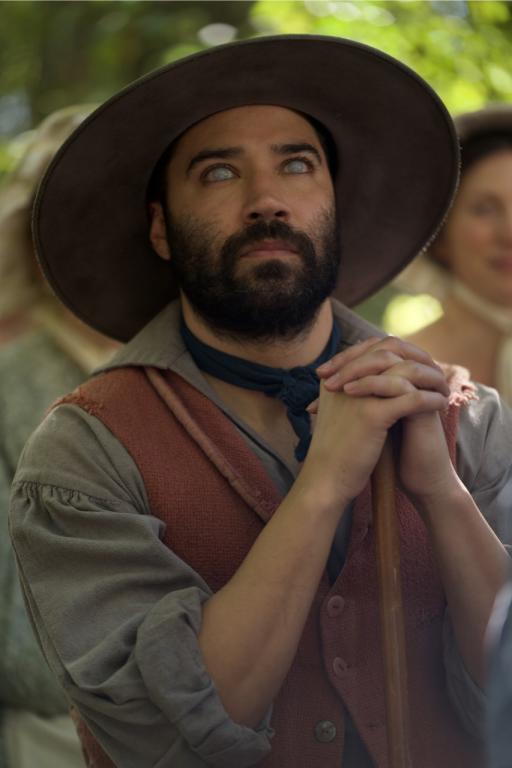
Recently, Adam Colvin provided me with copies of two documents from his family history. With his kind permission, I share portions of them here. The first extract comes from a “Life Sketch of Simeon Adams Dunn,” compiled by Nancy Dunn Watson:
James Dunn, the brother of Simeon, came to their home in Van Buren [Wayne County, Michigan] as a missionary of the Church of Jesus Christ of Latter-day Saints. He preached the gospel in that neighborhood and Simeon and his wife were baptized on the 15th day of April, 1839.
Simply embracing the gospel was not enough for Simeon. He had to see the prophet for himself, and perhaps offer his services to the growing church. In June 1840, Simeon left Van Buren on foot for Nauvoo. He met Joseph Smith and then returned home to get his family.
They arrived in Nauvoo on August 15, 1841. The Prophet Joseph was there to meet them and shook all their hands. Simeon purchased land from the prophet on which to build their home. It was located near the Mansion House on Hyde and Parley Streets. The children of the two families often played together. . . .
Simeon labored as a hand on the building of the temple in Nauvoo. . . .
The prophet was often called upon to heal the sick. The Dunn family could bear testimony to his power of healing. Once when Simeon was very sick, Joseph laid his hands on Simeon’s head and asked if Simeon had ever had the measles. Simeon answered, “No.” “You will have them,” replied the prophet, and before he removed his hands from Simeon’s head, he was broken out with thick spots. On the 6th day of May, 1843, a daughter, Susannah, was born to Simeon Adams Dunn and Margaret Sneider. A short time later, the child became sick with what was called “black canker.” Margaret took the baby to the prophet, who then went with the family to a stream of water. Joseph took the baby, laid it across his hand, face down, and immersed it in the water. The baby recovered.
Simeon and his family often saw the prophet riding on his favorite horse, Joe Duncan, at the head of the Nauvoo Legion or on parade the 4th of July. They also watched him participate in various sporting events and ball games on the green. . . .
On June 27, 1844, Joseph Smith and his brother Hyrum, were shot and killed while awaiting trial in Carthage Jail. Simeon returned from New York in time to be present for the meeting on August 8, 1844, when the mantle of the prophet fell on Brigham Young. As Brigham Young arose to speak, the congregation saw the Prophet Joseph instead of Brigham Young and they heard his voice as if he, himself, stood before them in life. It was unanimously accepted to sustain the Council of the Twelve Apostles as the leaders of the church. Simeon remarked upon leaving the meeting, “They need not hunt any further, Brigham Young is the man to lead us.”
The second passage is from a deposition given and signed by John Welch before the county clerk of Cache County, Utah, on 5 July 1902:
I was born January 6th, 1823, at Derbyshire, England, and I served as an apprentice at the cutlery trade at Sheffield until I reached the age of majority. I was babtized [sic] into the Church of Jesus Christ of Latter-day Saints in the year 1841; emigrated to Nauvoo, Ill. in 1843 and to Salt Lake City in the year 1852. I was well acquainted with the Prophet Joseph Smith and heard him speak both in public and in private many times. I was present at the meeting in the grove at Nauvoo August 8th, 1844, when Sidney Rigdon made the claim that it was his right to assume the leadership and presidency of the church. I saw Brigham Young, then the President of the Twelve Apostles, stand up to speak to the people and he spoke to the people and he spoke with the voice of Joseph Smith; and I further declare and testify that he, Brigham Young, had the appearance of the Prophet Joseph Smith while he, Young, was talking; that I was convinced then, and have never doubted in all the intervening years from that time up to the present, that Brigham Young was the right man and the man chosen of God to lead the Church.
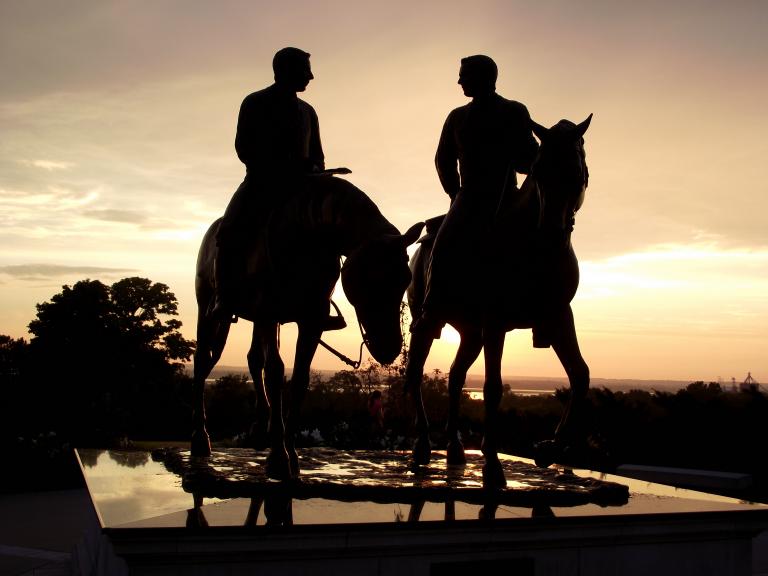
(Wikimedia Commons public domain image)
Frankly, I’m still rejoicing in the return of the Kirtland Temple and other sites there and elsewhere (including the Mansion House, mentioned above in the “Life Sketch of Simeon Adams Dunn”) to the Church of Jesus Christ of Latter-day Saints. So I enjoyed this: “Why the Newly-Purchased Nauvoo Sites are So Significant: A Photo Essay”
And, yes, I’m mindful of the sorrow felt by many members of the Community of Christ with regard to precisely the same transfer of ownership. I regret it. But — because some have suggest otherwise — I want to say that my rejoicing in no way entails indifference, let alone Schadenfreude, at their sense of loss. When the Los Angeles Dodgers defeated, say, the Chicago Cubs, my youthful pleasure at my team’s victory involved not so much as a scintilla of delight at the sadness of the other team’s fans in Chicago. (I can’t say the same about defeating the San Francisco Giants, though, or the New York Yankees. I don’t claim perfection.) The analogy isn’t perfect, I realize. But it’s not irrelevant, either.
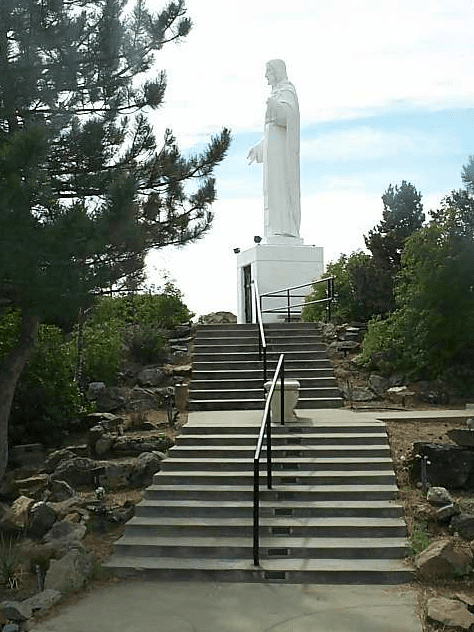
(Wikimedia Commons public domain photo)
Some of you may have noticed that I have something of a personal interest in religiously-oriented filmmaking. It’s not surprising, given that personal interest, that my attention was recently caught by mention of I am Patrick: The Patron Saint of Ireland. I would love to see it, but I doubt very much that I’ll get a chance to do so before this year’s St. Patrick’s Day. If anybody out there does see it, or has seen it, I would appreciate a report.
However, the currently most significant religion-themed film out in the theaters is Cabrini. I haven’t managed to see it yet, but I hope to do so relatively soon. In the meantime, here are some relevant links:
Still, there are some dissenting voices:
The American Spectator: “Gutting Jesus: Feminist Cabrini, Secular Saint: This is not a religious movie.”
National Review: “Cabrini’s Beauty Masks Its Sparse Spirituality”
Has anybody out there seen it? If so, do you have an opinion about it?
And — why not? — while I’m on the subject of filmmaking, this also caught my notice: “Kevin Costner brings movie magic to southern Utah”

(Wikimedia Commons public domain image)
Finally: If I fall behind in sharing material from the depressingly inexhaustible Christopher Hitchens Memorial “How Religion Poisons Everything” File™, I’ll never ever manage to catch up. So here is a trio of infuriating further illustrations of the evils wrought by theism and theists:


